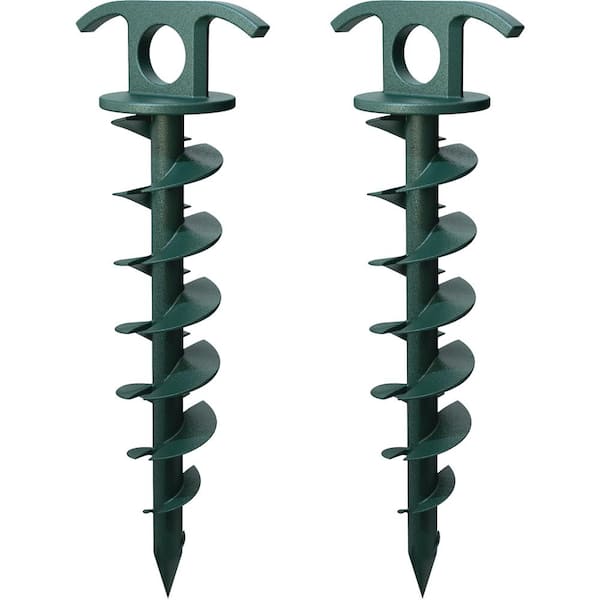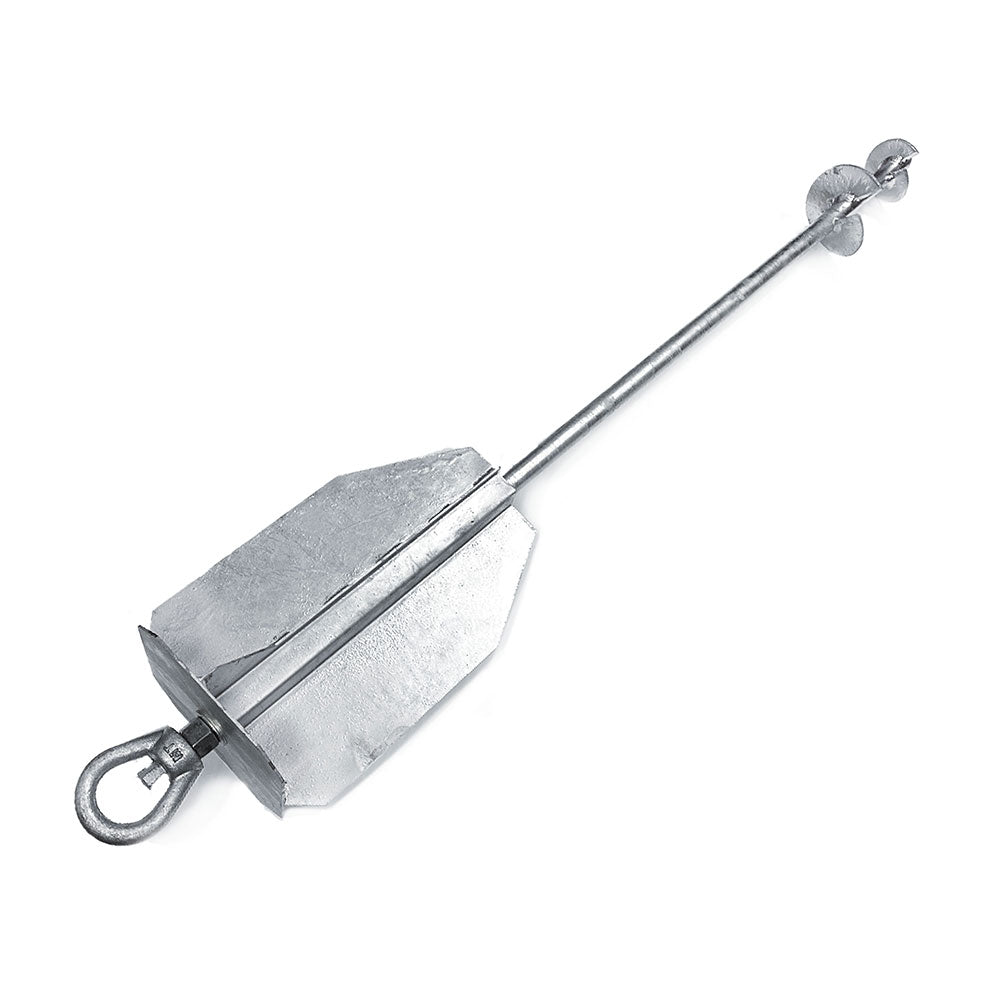Pro Tips on Properly Maintaining a Ground Anchor for Durable Performance
Pro Tips on Properly Maintaining a Ground Anchor for Durable Performance
Blog Article
Understand Why Ground Support Is Essential for Safety and Durability
Ground supports are an important part in building and construction, giving vital assistance and stability for numerous structures. Their capacity to move loads efficiently to the ground not only enhances architectural integrity but likewise plays a considerable duty in mitigating risks connected with ecological factors, such as unpredictable soil and seismic task. Comprehending the various kinds and applications of ground anchors can brighten their vital duty in guaranteeing safety and security and toughness. The intricacies of their setup and the advantages they offer might not be promptly apparent, triggering more expedition into this important subject.
Duty of Ground Anchors in Construction
Ground anchors play a crucial function in construction by offering important assistance and security to frameworks. These tools are developed to transfer tons from a framework to the ground, ensuring that structures and other facilities continue to be protected under different conditions. Ground anchors are specifically vital in situations where soil conditions are unsteady or where there is a risk of lateral activity, such as on slopes or near bodies of water.
The installation of ground supports entails exploration right into the planet to get to stable dirt or bedrock, where the supports can be securely secured. This process not only improves the architectural stability of a task but additionally alleviates the risks associated with dirt erosion and shifting. Additionally, ground supports can be used in short-lived frameworks, such as construction sites, where they supply needed stabilization during the structure process.
Ground supports also add to the durability and longevity of structures by minimizing the possibility of settlement and failure. Ground Anchor. By efficiently dispersing and managing tons, these essential parts are important in preserving safety standards and ensuring the integrity of different building projects. Generally, the significance of ground anchors in building and construction can not be overstated, as they are important to effective design methods
Sorts Of Ground Supports


While many sorts of ground anchors exist, each serves particular applications and conditions within construction tasks. The most usual types include mechanical supports, grouted anchors, and driven supports.
Mechanical anchors, such as growth anchors, make use of a mechanical activity to safeguard the anchor within the substrate - Ground Anchor. These are usually employed in lightweight applications, like safeguarding components to masonry or concrete
Grouted anchors, on the other hand, include piercing an opening, putting a steel pole or cable, and after that filling the annular area with grout. This approach is suitable for high-load scenarios, offering enhanced security and resistance to dynamic pressures typically found in heavy construction.
Driven supports are usually installed by driving a steel pole or pipe right into the ground, making them suitable for short-lived applications such as securing scaffolding or formwork. They are fast to install and can be gotten rid of easily when no more needed.
Various other specific anchoring systems include helical anchors, which are screw-like devices utilized in numerous dirt conditions, and deadman supports, which count on the weight of a buried item to supply security. Each kind of ground support is created to satisfy certain engineering demands, making certain safety and security and architectural honesty.
Advantages of Making Use Of Ground Anchors
The benefits of using ground anchors in building tasks are considerable, enhancing both security and structural performance. Ground anchors supply necessary resistance versus side forces, such as dirt movement, wind tons, and seismic task. This resistance aids maintain the security of structures, avoiding potential failings that can result in costly repair services or harmful situations.
Furthermore, ground supports help with the efficient transfer of tons from structures to the surrounding dirt, making certain a balanced distribution of weight. This load transfer lowers the danger of settling or moving, which can endanger the honesty of a structure gradually. By using ground supports, engineers can also develop much more efficient styles, as they enable slimmer structural elements while preserving security requirements.
In addition, ground anchors are adaptable and functional to numerous dirt conditions and task needs. Their installation can frequently be finished rapidly and with minimal disruption to the surrounding atmosphere, making them an great site effective selection for several construction applications. Inevitably, the use of ground supports enhances not only the resilience of structures but additionally adds to a safer working environment for building personnel and future passengers.
Typical Applications and Makes Use Of
Countless construction tasks utilize ground supports for their performance in improving stability and safety. These functional components are typically used in various applications throughout the building and civil engineering sectors. One common application remains in keeping wall surfaces, where ground supports provide the essential support to stop soil activity and look at more info keep architectural honesty.
Furthermore, ground anchors are vital in securing temporary structures, such as scaffolding and shoring systems, ensuring they remain stable during building and construction activities. In the world of foundation support, they are used to strengthen existing structures, especially in areas prone to ground negotiation or shifting soil problems.
Ground anchors likewise locate considerable usage in incline stabilization jobs, where they aid minimize landslide threats by securing the soil to secure rock developments. Another significant application is in the installation of wind generators, where they secure the base against lateral forces produced by wind, making sure functional safety and security and longevity.
Moreover, ground anchors are employed in tunneling jobs to maintain the bordering ground during excavation. Their varied applications highlight the critical function ground supports play in maintaining security and toughness in different building scenarios.
Setup Best Practices
Effective application of ground anchors in different construction tasks hinges on reliable installment methods. Correct setup is essential to guarantee the supports meet their desired purpose and preserve architectural honesty over time. Key finest methods include complete website analysis, which involves examining dirt problems, lots demands, and environmental factors that may influence support efficiency.
Before installation, it is important to choose the ideal type of ground anchor based on the certain application and dirt features. Utilizing top notch products and adhering to manufacturer requirements will certainly enhance the support's toughness and efficiency. During installment, make sure that the anchor is put at the right angle and depth, as these aspects considerably impact load-bearing capacity.
Regular assessments are likewise recommended to check the problem of the supports and surrounding soil. By complying with these setup best designers, contractors and techniques can boost the security and durability of structures reliant on ground supports.

Verdict
In summary, ground supports are necessary parts in building, substantially boosting safety and durability. Their ability to move tons effectively alleviates dangers connected with unstable soil and side motions. The varied kinds and benefits of ground anchors, coupled with their wide-ranging applications, underscore their value in both short-lived and irreversible structures. Following installation best my company practices ensures ideal performance, consequently adding to the total honesty and long life of building and construction jobs.
The installation of ground anchors involves exploration right into the planet to reach steady dirt or bedrock, where the anchors can be firmly secured.The advantages of using ground supports in building projects are substantial, improving both security and architectural efficiency.Various building jobs take advantage of ground anchors for their efficiency in boosting stability and safety.Effective application of ground supports in numerous construction tasks pivots on effective installation techniques.In recap, ground anchors are vital parts in building, considerably improving safety and security and resilience.
Report this page